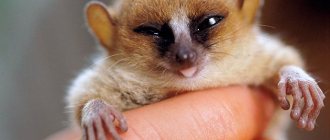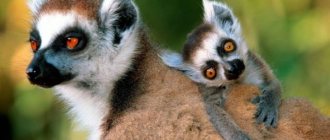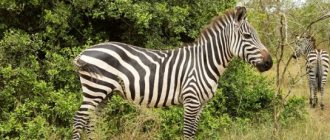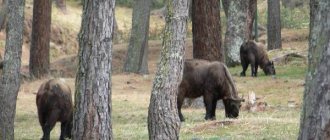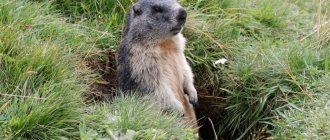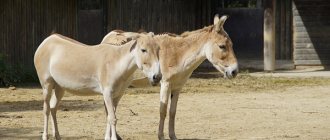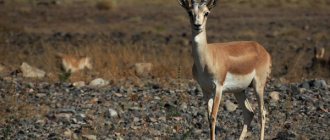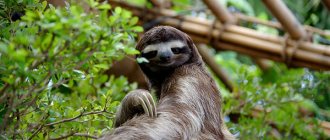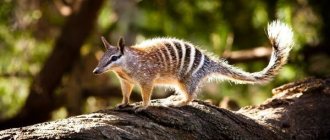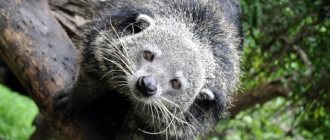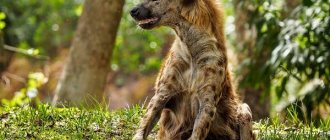Such an amazing and mysterious-looking animal, the loris, nowadays lives not only in natural conditions. In the modern world, there is a fashion for domesticating these rare animals. In nature, due to the destruction of the natural habitat (deforestation), representatives of this species are endangered and are listed in the Red Book.
Initially, scientists classified lorises as sloths, and then as lemurs. Subsequently, it was determined that this animal belongs to the order of primates. The origin of these animals dates back to ancient times.
Description
The loris looks like an alien guest - a small animal with huge mysterious eyes. These animals are characterized by low movement speed. If they are in danger, they may freeze and remain motionless for a long time. A special feature of these primates are special glands located in the area of the elbow bends of the paws, containing poison. If this seemingly very cute and harmless animal identifies a threat, it can attack the offender and inflict fatal injury. The animal's saliva mixed with the poisonous secretion from the gland can kill the victim within a few hours after the bite.
Toxic substances constantly enter the saliva as the animal licks the place where the gland is located. The poison gets onto the fur when the loris rubs its head on the bend of the elbow, which is an excellent protection not only from enemies, but also from all kinds of parasites. The amount of toxins released depends on whether the loris considers the situation dangerous. A characteristic posture indicates readiness for defense - the head is lowered, and the front paws cover it. The poison looks like a clear liquid with a pungent, unpleasant odor.
You can see what the lemur loris looks like in the photo:
Appearance
This big-eyed animal is usually no larger than a miniature rabbit. The animal is covered with thick short hair. The length of the loris depends on the variety and varies from 18 – 20 to 37 – 40 cm. Weight can range from 350 g to 1.7 – 1.9 kg. The predominant type of color is gray-yellow or brown, which acquires a darker and richer shade in the spine area. Below the color is lighter.
These primates got their funny appearance due to the peculiar darker color of the fur around their eyes. There is a thin light stripe between the eyes. Externally, this coloring resembles glasses.
The animal's ears do not stand out in size and are quite inconspicuous under the thick soft fur, and have a rounded shape. The animal has a large head with a short muzzle. Strong front and hind legs with prehensile claws are approximately the same length and are designed for climbing trees. The thick undercoat practically hides the small and inconspicuous 2-centimeter tail.
Habitat
In the wild, the loris animal is found in tropical forests. It prefers the crowns of trees and almost never descends to the ground. This species is most widespread in Southeast Asia. It inhabits the forests of Singapore, Malaysia, India, Cambodia, Vietnam, Thailand, Indonesia, Laos, northern China, and the eastern Philippines. Some forests located in the central regions of Africa have also become the natural habitat of these animals.
Lifespan
In the wild, the lifespan of a lemur is usually about 13 – 15 years. At home, if you provide the animal with the right diet and care, and if possible protect it from various viruses and infections, it will be able to please its owner for 22 - 25 years.
Taking care of your neighbor
Slow lorises are unusually peaceful animals. They never conflict with their relatives, and when they meet, they take interesting “welcome” poses or groom each other’s fur. Especially for this process, the fat loris carries with it a special tool - a long claw growing on the index toe. All other claws of this loris species are short.
Cute, charming, touching, cute... in a word, sweethearts! This is us about the cutest baby animals this year, to whom this issue is dedicated.
Attention! While watching, you may experience repeated feelings of tenderness, involuntary smiles and a desire to stroke your computer screen! (Total 45 photos)
(Total 45 photos)
1. Okay, let's start with the albino wallaby. You can already start practicing the enthusiastic squeak - you will need it.
2. A cute antelope at the Berlin Zoo.
3. Wonderful baby hippopotamus. So slippery, but so wonderful.
4. Little penguins. They can't help but like it.
5. Baby gorilla with the most soulful look
Attention! If you look into those eyes for too long, you can forget about everything in the world.
6. Newborn aardvark. Well, isn't he adorable?
7. And this is a newborn elephant calf.
8. This little barasinghi looks like he wants to tell you something... “Aren’t I cute?”
9. Baby fennec fox. The most adorable feature is their huge ears.
10. This cute baby rhino seems to be reproaching you for not being affectionate enough for him.
11. A very shy but very cute baby nose.
12. Tilly the kangaroo, who was raised in this backpack when he lost his mother.
13. A charming newborn armadillo, although it looks more like a pebble. On a charming pebble.
14. And, of course, puppies, which always cause affection. Especially this one, because he so dreams of being a cowboy.
15. Tiger cub surrounded by plush versions of himself.
16. A jumping rabbit owl chick is just adorable!
17. In general, jumping animals are so funny and cute. Take this little tapir, for example.
18. Croooooey Egyptian turtle. This species is very rare, so every birth of such a creature is a cause for celebration.
19. Charming black cat. More precisely, a baby panther. Big panther.
20. A little fox playing in the snow simply cannot help but be cute.
21. Just look at these eyelashes! Maxfactor is resting.
22. Dune cat cub. One day he will grow up and become the ruler of the dunes.
23. Mi-mi-miiiiiii….
25. And this lion cub seems to be reaching out to you with its furry paw.
26. What are you doing?
27. This baby peccary was found in one of the parks in Texas. He won't be as cute when he grows up, so let's enjoy the moment.
28. A baby jaguar is weighed. He doesn't seem to care about his own weight at all. The camera is more interesting.
29. Teddy Bear with Teddy Bear. Ooooh...
30. A newborn Asian elephant learns to walk.
31. Twin tiger cubs. Hmm... Beavis and Butthead, only much cuter.
32. Aaaaah! Baby sloth! That's it, the level of cuteness is starting to go off scale.
33. This little donkey has to wear a cast on his legs until they get stronger. But even so he is charming.
34. Kitten Daisy. She is so cute that I had to create a separate post about her.
35. This orphan was rescued from a forest fire. And he's in diapers!
Planet Earth is inhabited by a huge variety of animals. Human life is inextricably linked with wild nature. Some animals have been tamed and become beloved pets, while others continue to live in their natural habitat, allowing people to observe themselves from afar.
It doesn’t matter whether they are wild or domestic animals, a person’s attachment to them remains. People admire their trusting eyes, fluffy tails, smooth, silky fur, special behavior
Being around animals makes our life more joyful and warmer. Read the article about the most beautiful and cutest animals that live in nature.
Varieties
The primate species of loris can be divided into the following groups:
- Dwarf (small) type.
- Slow loris.
- Thin type.
- The Javan species is found on the island of Java and is endemic.
Slow loris
This species is also called Bengal. The body length of the animal is 22 – 40 cm. Weight can reach 1.5 – 1.9 kg. The habitat of the Bengal loris is India and Indochina. The color is brown with a gray tint. The color of the front legs is almost white, in some cases it may differ from the color of the hind legs. The second toe on the front paws is shortened in comparison with the others. The slow loris is distinguished by a dark stripe located on the animal's head, but not reaching its ears.
Slim look
The body length of an animal of this species is in the range of 17 - 25 cm, the average weight is 310 g. The undercoat of thin lorises is less dense than that of their Bengal counterparts, and the dark stripe located along the spine is not so pronounced. The predominant color is yellowish. The animals' ears are quite large, and there is no hair on the protruding tips. The length of the tail does not exceed 1 cm.
This species is common in the jungles of Sri Lanka and southern India.
Small or dwarf species
These animals are distinguished by their small size - the length of the largest individuals does not exceed 22 cm, and body weight ranges from 320 to 470 g. These animals have a tail completely. The predominant color is brown, which can have various shades - from brown to light brown, with a reddish tint. The thumb seems to be opposed to the others.
The small slow loris is most widespread in the tropical forests of Cambodia, Vietnam and Laos.
Javan loris
The habitat of these animals is located exclusively in the central and western regions of the Indonesian island of Java. Therefore this species is endemic. Individuals of the Javan loris are quite large, reaching a length of 37–38 cm, with an average weight of 1.8 kg. The Javan species differs from other loris lemurs in the peculiar coloring of its face - black stripes emanate from the eyes and ears and converge on the top of the head, forming a white area on the forehead, shaped like an elongated diamond. This coloring gives the animal some resemblance to a panda.
Dwarf lemur
The dwarf lemur is a subspecies of animals that includes several distinct subspecies. They all inhabit different regions of Madagascar. However, they can be described in the same way - the animal is small: 30 centimeters in length and weighing up to 100 grams. It has soft, silky fur, a rounded head and a small muzzle.
They feed mainly on plant sap and nectar. They are nocturnal, but can remain stationary during the day.
They are noticeably distinguished by their large, black eyes. They see well in the dark and have acute hearing.
Character and lifestyle
Animals become active in the evening. Night time is used to search for food and hunt. Huge eyes allow these primates to navigate perfectly at night and in the twilight. Bright sunlight can adversely affect vision, or even blind the animal. Therefore, during the daytime, lorises sleep or rest in the shade of trees, curled up in a ball.
In addition to night vision, they have excellent hearing, which helps them avoid unwanted encounters with predators. The slightest danger turns the loris into a frozen, motionless shadow until the threat passes. They have an inquisitive and playful disposition. They know the boundaries of their territory very well and are ready to defend it from the invasion of other individuals. Some individuals lead a solitary existence. Others may live in pairs or small colonies consisting of a male and several females, or a pair and their offspring.
To communicate with each other, animals emit various sounds, including those in the ultrasonic spectrum, which the human ear is not capable of detecting.
The most unusual birds
Red-crested turaco
Spiders are among the smallest creatures that have a proportionately high level of intelligence, especially the white pig spiders, which live in African, Asian and Australian forests and have demonstrated specialized learning skills. Although small, they have the ability to withstand disasters that would devastate other species. Coordination in massive groups to build nests and forage for food is often observed. are also very good for their environment. These are all notable points when it comes to measuring intelligence.
The most unusual mammals
Baboons are old world apes with very similar cognitive abilities to chimpanzees or orangutans, but unlike other animals, research shows that baboons are able to identify and overcome stress. They create highly complex social systems and can think decisively when faced with difficult situations.
Like chimpanzees, orangutans' intelligence is measured by the way they imitate human actions and also have the unique ability to learn complex new techniques such as sawing wood, hammering and nails. Orangutans have the ability to understand their surroundings in a more abstract way than other animals, allowing them to acclimate to harsh environments.
Nutrition
Under natural conditions, the menu of the lemur loris is quite varied and consists of lizards, small birds and their eggs, and insects. Lemurs do not disdain various poisonous caterpillars, and consider tree resin as a delicacy.
The slowness of animals does not always allow for a full-fledged hunt, and often the prey manages to escape from the tenacious clutches. Therefore, a significant part of their menu is occupied by plant foods - flowers, leaves and fruits growing on trees. Animal droppings spread plant seeds.
The diet of a domesticated pet includes:
- Fruits - pear, apple, melon or papaya, banana (excluding overripe ones), kiwi.
- Raspberries and cherries.
- Quail eggs.
- Special insects for feeding, purchased at a pet store.
- Carrots and cucumbers.
You can supplement your diet with baby cereals, purees and cottage cheese, as well as homemade crackers, dried fruits, nuts, biscuits, freshly squeezed juices, and honey. However, these products should never be abused, since systematic improper feeding of the animal and stressful situations contribute to the development of diabetes. Without appropriate treatment, the pet's death occurs very quickly.
A tamed pet pleases by accepting treats directly from the hands of its owner.
Peculiarity
If you plan to have several lorises, then remember that conflict situations may arise between the animals. Although usually males and females get along well, there may still be times when one of the animals wants to be alone. If you keep several individuals in one cell, then in any case a hierarchy will appear. Weaker ones will avoid the aggression of dominant lorises. Therefore, it is important to have several cells (just in case), as well as places to hide if a conflict suddenly breaks out.
Since these animals are intelligent and curious, the door to their home should be equipped with a locking mechanism that the loris cannot open. An escaped animal is a problem; it can get into various troubles in the apartment.
Enemies in nature
Living in trees and practically not descending to the ground, primates naturally protect themselves from many dangers. Strong and resilient paws help their owner to constantly stay on the branches without feeling tired. This is achieved through increased blood circulation in the lemur’s limbs.
The most common enemies of these cute animals are large pythons, birds of prey, and orangutans.
Ostriches
This bird is well known to many inhabitants of the earth. Ostriches are considered the largest of birds. The weight of an adult individual can reach 75 kilograms, and the height can be up to 2.7 meters. Of course, ostriches are usually found a little smaller. But they are distinguished not only by their huge size, but also by their large eyes. For example, if we compare them with the brain of a bird, then its visual organs are still much larger. Therefore, even if the ostrich is not particularly intelligent, it is famous for its keen eyesight. These birds are able to see an object at a distance of a kilometer. As soon as the ostrich sees danger, it runs away. Since other animals do not have such sharp eyesight, they watch the ostriches and also rush to flee from danger, which they do not even imagine yet.
Reproduction
It is quite difficult for these animals to find a mate, both in nature and at home. After the formation of a pair, the female begins a period of pregnancy, which lasts about six months. After this, 1–2 babies are born, covered with fur. When born, the cubs are already able to see. Their weight is about 50 - 150 g, depending on the type.
Caring for offspring
Both parents take care of the newborn baby. The baby is able to “call” his parents by making sounds reminiscent of a bird chirping. For the first 1.5 - 2 months, the mother does not leave the cub, moving along the branches with him. Sometimes the baby climbs onto the father and tenaciously holds on to the fur on the parent’s belly. The female feeds the offspring for 4 to 5 months. Young individuals do not leave their parents for another 17–18 months.
According to statistics, 50% of young animals die in the first 6 months of their lives, becoming prey to predators due to inexperience.
Some interesting facts
Usually a small monkey with big eyes gives birth to two babies. The third is born only in 8% of cases. The survival rate of babies is only 67%. It is not advisable to keep marmosets in captivity, since they greatly miss their relatives and often die from depression.
These miniature animals are able to jump a distance of about five meters. They support their own weight with the help of sharp long claws. The marmoset's head can rotate 180 degrees. They are quite sociable and are capable of producing high-frequency sounds that are inaudible to human ears.
Lori as a pet
Keeping these primates in captivity is quite troublesome. These are capricious creatures, caring for which requires special conditions and knowledge. To keep an animal comfortable, it is necessary to recreate its natural habitat in captivity if possible. In captivity, lorises prefer to be in pairs or groups.
At the moment, keeping such a lemur is fashionable and prestigious. Preference is given to slow or pygmy lorises. You can purchase a cub in special nurseries from professional breeders. It is strictly prohibited to remove animals from their natural habitats.
To keep lorises at home, terrariums are often used, taking into account that there will be at least 1 cubic meter per lemur. Male individuals constantly mark their territory with a liquid with a characteristic unpleasant odor. If marked objects are removed from the terrarium, this can cause stress in the animal and lead to illness and even death.
You should not provoke the animal by causing aggression in it, since the loris is capable of defending itself by inflicting quite serious deep wounds on the offender.
There are also positive aspects of keeping these exotic animals in captivity. People suffering from allergies can get such a pet – the animal’s fur is odorless and does not cause allergic reactions. Lories get along well with other pets, provided they are patient and well trained. They do not damage furniture or peel off wallpaper, and the wires will always be completely safe, although they do not require trimming their claws. But it will most likely not be possible to train the animal to use the toilet. You can win your pet's favor by hand-feeding him his favorite food.
When deciding to take care of a new pet, you should carefully weigh all the positive and negative aspects. The future owner needs to understand that this is a wild animal that is difficult to tame and is active only at night. Before purchasing, you should acquire skills in caring for and feeding loris, and then your new friend will delight its owner for many years.
Characteristics of a funny animal
This animal with its appearance evokes only tenderness. On the small muzzle, large sad eyes are visible from afar, the expressiveness of which is emphasized by dark rings. There are two types of loris: greater and lesser. How are they different? Now we'll tell you.
The first is size. The small loris weighs no more than 700 g, and the great loris weighs no more than 1.2 kg. That is, the difference in mass is almost twofold. Color is the second difference. The small loris is beige, and the big one is light gray with a beige (or red) butt and a stripe on the back. The third difference is the degree of bite. The small one bites less and does not hurt as much as the big one. The first gets used to the environment faster than the second, who adapts rather slowly to a new home. Fourth - nutrition. Of course, the great loris eats more (several times) than the little loris.
Pets
Cats are the most common human pets. But they attract not only with their graceful, beautiful body, but also with their big eyes. But even among cats there are record holders - the British. Their eyes are very large compared to their body and they are not equipped with eyelashes. But this fact does not prevent purrs from finding their way in the dark. You can often notice how their eyes begin to glow in the darkness. This phenomenon is observed when light hits a cat’s face, in which case it is reflected from the organ of vision along exactly the same path along which it hit the retina.
This large-eyed pet has a unique vision. A cat is able to see 180° and observe what is happening behind its back, but at the same time it cannot see the picture in front of its nose, so it is forced to use its sense of touch. This is why cats are always on the alert. Interestingly, if necessary, the animal is able to focus its gaze on one point. At this moment, his muzzle seems very concentrated, and his pupils are fully dilated.
In addition, it is important to note that a cat can see objects at a distance of 60 meters
It was also believed for many years that purrs see the world in black and white. But modern technology has proven that this is not so. Cats are able to distinguish colors, but this spectrum is not as wide as that of humans. The main specificity of the cat's eye is the detection of gray shades. In any case, this animal has vision six times sharper than humans. But this big-eyed pet can compete in its abilities with ostriches, which also occupy an honorable place in the list of “big eyes.”
Tarsier
Many have heard that there is a small animal that lives in the Philippines and is famous for its unusually large eyes. In its homeland it was called “tarsier”. Among mammals, it ranks first in terms of the ratio of eye size to body size. Thanks to this, he was included in the Guinness Book of Records. This small animal with large eyes has a body weight of only 134 grams. Females weigh even less - only 117 grams. Accordingly, they have a small body size, which usually ranges from 10 to 15 centimeters. But their eyes are surprisingly large, and each of them weighs more than the animal's brain. If a person had the same height-to-eye ratio, it would look as if we had grapefruits inserted into our eye sockets.
The tarsier is nocturnal. He navigates very well in the dark, and he is also able to see ultraviolet light. But this baby cannot distinguish colors. The animal is not dangerous to society, but on the contrary, eats various insects and worms. If someone manages to tame it, the tarsier will turn out to be a good assistant to its owner in exterminating parasites. But this cute animal with big eyes has great difficulty getting used to a person and may not get along with him. So, the diet of this big-eyed bird includes spiders, small vertebrates, lizards and insects. To feed, the baby grabs the victim with both paws and does not let go. Interestingly, tarsiers can turn their necks 360°, and this fact used to frighten local residents very much, who thought that the head of these animals was separated from the body.
